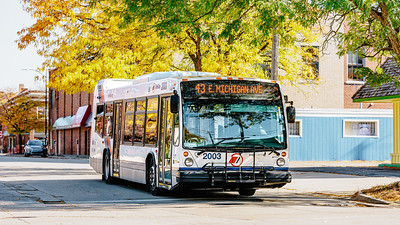Yesterday, I wrote about the median and mean incomes in Ypsilanti, and how those figures both exceed the average earning potential for a WCC graduate. WCC graduates aren’t the only losers in this deal, though. The City of Ypsilanti also loses and in some big ways.
Currently, the median home price in the City of Ypsilanti is about $300,000. That’s clearly unaffordable for people at the low end of the income scale. In Ypsilanti, a $300,000 home means that the buyer needs to have an income of nearly $100,000 to qualify for a home loan, and that’s if the purchaser has a 10% down payment.
Using Census data on household from the most recent American Communities Survey, that excludes 8 out of 10 Ypsilanti City residents. The purchaser is likely to come from outside the City of Ypsilanti, or the house may fall out of the “owner-occupied” category and join the 70% of Ypsilanti’s housing stock that is rented.
Seventy percent of the residential population lives in rental housing, which means that 70% of the population is subject to market gyrations. More importantly, the high percentage of income properties makes it difficult to consider replacing the City’s oldest housing stock. I’m not talking about historic homes, but rather housing that has simply exceeded its useful life. These houses either require a “down-to-the-studs” rehab, or they need to be torn down and replaced with contemporary housing.
I’m not opposed to maintaining historical homes, but old housing stock is highly energy inefficient. Old houses may be filled with lead, asbestos, mercury and other hazardous materials. They may use dangerous construction techniques, have poor ventilation and old wiring. Some old housing stock simply isn’t worth saving, but it is virtually impossible to raze derelict homes when they’ve become rental housing.
WCC doesn’t address Ypsilanti needs
Like most older cities, Ypsilanti is virtually fully built. It doesn’t have much vacant land on which to build new homes and neighborhoods. Any new residential units will come from rehabilitation and/or conversion of existing structures, or from teardowns of old homes. In some cities, people are willing to buy “teardowns” because the land is more valuable than the structure that sits on it. Ypsilanti isn’t one of those cities.
So, where does WCC come into all of this? The school’s inability (or more likely, unwillingness) to create academic programs with high income potential means that few graduates can afford to live and buy homes in Washtenaw County’s least expensive city. The median home price is beyond their earning capabilities. The extraordinarily high percentage of rental housing units here puts an inordinate burden on the City, which must inspect rental properties annually. And the likelihood of converting rental housing back to single-family housing is slim at best.
We need WCC to be better than it is, and more attuned to the critical employment and earning needs of eastern Washtenaw County residents. All of Eastern Washtenaw County. We’re not getting that from the current crop of Trustees, 86% of whom come from Ann Arbor. Eastern Washtenaw County must have WCC Trustees that understand and can champion the needs of the residents here. We need resident Trustees who will insist that the WCC administration delivers results for us. It is truly a matter of our economic survival.
Photo Credit: Wu Haoxiang, via Flickr

























